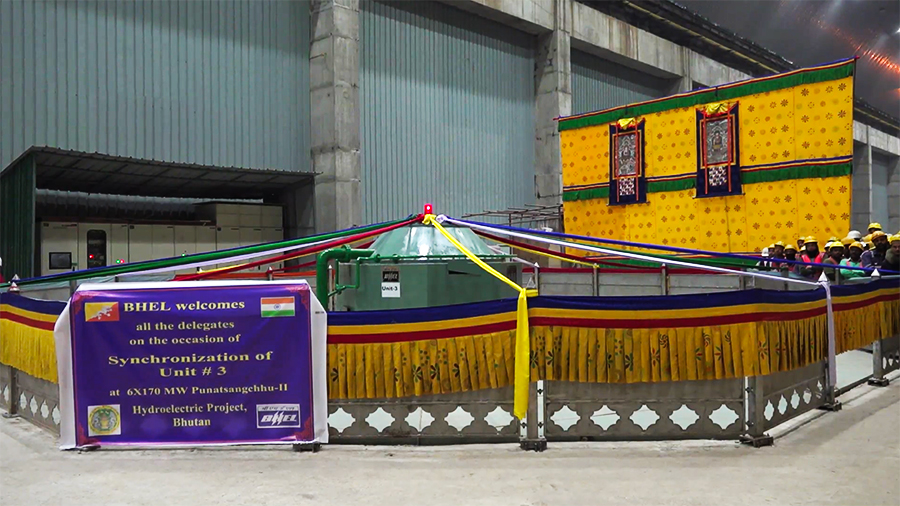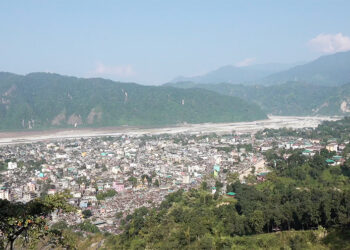 The Punatsangchhu-II Hydroelectric Project in Wangdue Phodrang has started generating electricity from its third unit. The inauguration ceremony for its commissioning and synchronization was held today. With this, the three units of the project will generate 510 megawatts of electricity, which has now been integrated into the national grid. So far, more than 98 per cent of overall project construction works have been completed.
The Punatsangchhu-II Hydroelectric Project in Wangdue Phodrang has started generating electricity from its third unit. The inauguration ceremony for its commissioning and synchronization was held today. With this, the three units of the project will generate 510 megawatts of electricity, which has now been integrated into the national grid. So far, more than 98 per cent of overall project construction works have been completed.
 Indian Ambassador to Bhutan, Sudhakar Dalela, and Minister for Energy and Natural Resources, Gem Tshering, graced the commissioning ceremony.
Indian Ambassador to Bhutan, Sudhakar Dalela, and Minister for Energy and Natural Resources, Gem Tshering, graced the commissioning ceremony.
The project began synchronizing the third unit and integrating it into the main grid today, meaning the unit has now transitioned from the construction phase to the power generation phase.
According to officials, the commissioning and synchronization of this unit began after testing of its turbine.
An official said that with the third unit generating power, electricity imports will be reduced during the lean season.
The government plans to commission the remaining three units by June this year.
The Punatsangchhu-II Hydroelectric Project has a total of six units with a combined power generation capacity of 1,020 megawatts once fully commissioned.
Unit I and II of the project were commissioned and synchronized in December last year and have generated revenue of more than Nu 1.25bn so far.
Rajesh Kumar Chandel, Managing Director of Punatsangchu-II Hydroelectric Project said “I am happy to share that, till date, we have generated around 305 million units of clean energy from Unit I and II of PHPA-II and in terms of financial generated revenue of more than Nu 1.25bn.”
Sudhakar Dalela, Indian Ambassador to Bhutan said “As we celebrate this achievement, let us recognize that work does not end here. Let us put all our efforts in commissioning the remaining units this year.”
Project officials said the remaining construction works are progressing well and they are pushing to complete on the targeted deadline.
The Government of Bhutan and India began the project in 2010 and planned to complete it by 2017 with an initial estimated cost of more than Nu 37bn.
But with several work extensions and budget escalations, the current budget for the project has been estimated to be 94 billion ngultrum.
Changa Dorji, Wangdue Phodrang
Edited by Tshering Zam







